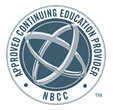QPR for First Responders: LEO, EMT & Firefighters
$99.00 (VOLUME PRICING AVAILABLE)
First responders have frequent contact with those at risk of suicide, both in the publics they serve and within their own ranks. Learn what you can do to identify and respond effectively with evidence-based life-saving skills.
Program Purpose
Preventing deaths by suicide may be part of the first responders job, but this training program’s focus is not only on preventing suicide deaths in the community where you work, but among your colleagues, friends, family, and co-workers.
First responders continue to die by suicide at unacceptably high rates. The need for a peer workforce trained and able to recognize suicide warning signs and intervene quickly with safe and effective evidence-based interventions is clear.
Designed to prepare first responders to deal effectively with those in a suicide crisis- and especially their peers - this training program is designed to produce a kind of “super gatekeeper” able to do much more than recognize and refer someone in crisis. Rather, the course includes mastering specific science-based intervention skills known to cool down the temperature of a crisis, and immediately reduce the risk of a suicide attempt.
Through a mix of interactive, robust, multimedia, evidence-based and evidence-informed scenario-based training experiences, participants are prepared to detect suicide risk and immediately intervene with science-based risk mitigation and management strategies.
Following WHO recommendations, and by using the technology transfer of science-based best-practices knowledge, skills, attitudes, and abilities, the training program targets participants in peer support roles, helping professions, first responders, and non-professional natural helpers.
Training Goals
Upon completion of training, all participants should be able to:
- Describe suicide as a major public health problem and burden of suffering
- Identify their own personal reactions to suicide
- Use proper terminology to describe suicidal behavior
- Be familiar with suicide language use sensitivities
- Explain the common myths and facts surrounding suicide
- Identify unique verbal, behavioral, and situational suicide warning signs
- Recognize the coded nature of suicide warning signs
- Describe risk factors and protective factors for suicide
- Describe the relationship of mental illness and substance abuse to suicide
- Demonstrate increased knowledge, skills, self-efficacy in helping others
- Show increased intent to act to intervene with those at risk
- Explain how to detect, engage, assist those in crisis
- Conduct a deep listening guided interview with someone in crisis
- Engage supportive third parties in setting up a risk management plan
- Describe means reduction and how to reduce access to lethal means
- Carry out a means reduction intervention in role-play
- Describe a safety and/or referral plan and know how to develop one
- Understand and employ the caring contacts intervention
- Engage in an interactive and helpful conversation with the loved ones or family members of someone who has died by suicide
- Define and describe postvention and steps to take to reduce suffering
- Successfully complete multiple scenario-based simulations to demonstrate skill mastery
WHAT THIS TRAINING PROGRAM IS NOT
This training is not a substitute for a college degree in counseling or other helping profession, nor can it provide the face-to-face supervised experience students need to polish their skills.
- This is not a train-the-trainer program.
- The QPR Institute does not vet or otherwise qualify students for this course.

